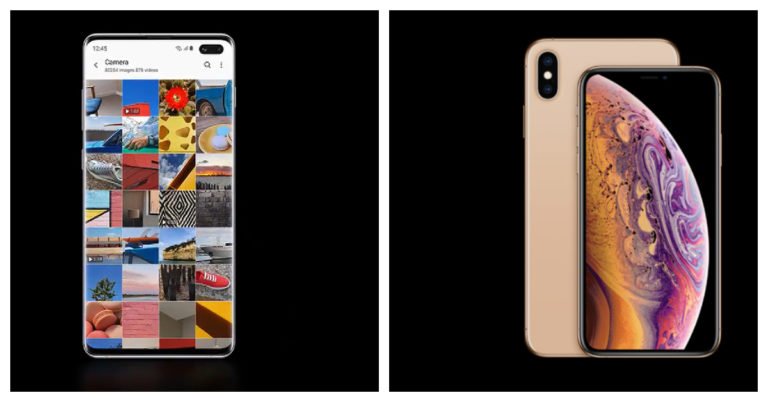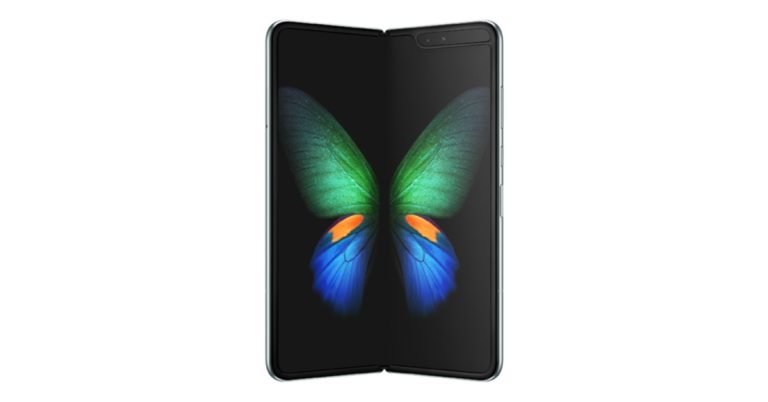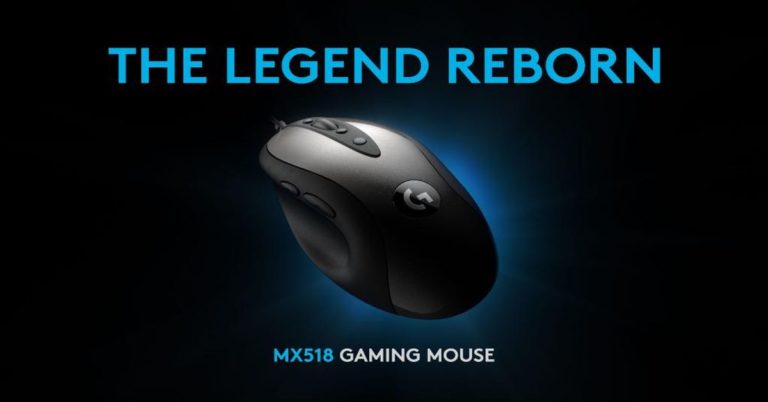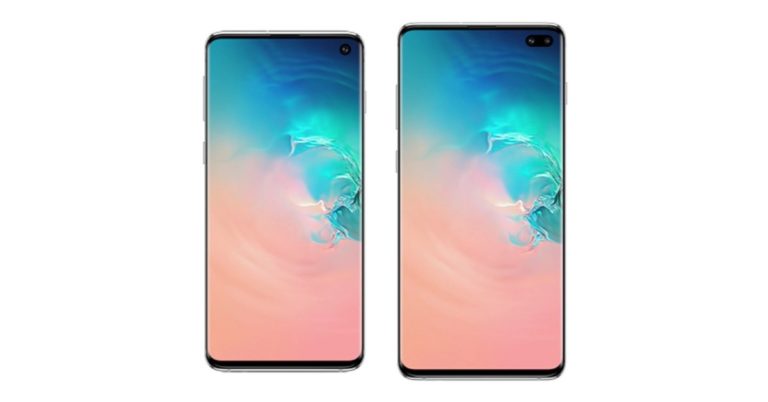Samsung Galaxy S10 series to go on pre-orders sale via Flipkart starting February 22
Huawei teased Lossless Zoom in their upcoming P30 series
Chinese smartphone maker, Oppo is also developing its own 10x hybrid lossless zoom technology and we might get to see it in the future Oppo phones. If that happens then we can say that the Huawei P30 will give tough competition to the Oppo’s upcoming smartphone with the same tech. https://twitter.com/HuaweiMobile/status/1098306945902174215 For the latest gadget and tech news, and gadget reviews, follow us on Twitter, Facebook and Instagram. For newest tech & gadget videos subscribe to our YouTube Channel.Rules were made to be rewritten. Paris, 26.03.2019. #RewriteTheRules #HUAWEIP30 pic.twitter.com/hFzZI3pVYr
— Huawei Mobile (@HuaweiMobile) February 19, 2019
How to share your real time location with others using Google Maps
- Open settings.
- Scroll down to Google Maps>Location.
- Toggle the switch next to your contacts towards the right side. That will help Google Maps access your contacts.
- After this, tap on Always.
- Open Google Maps
- Tap on the blue dot, which shows your current location
- A blue screen will appear after this where you will find three options—See nearby places, share your location and save your parking. Out of the lot, select Share your location.
- Tap on the plus or minus button depending on for how much time you want to make your location visible.
- Choose whether to send location on WhatsApp, SMS, Facebook, email etc. Select the contact with whom you want to share your location with and send.
Google “forgot” to mention about the microphone in Google Nest devices
Oppo F11 Pro to launch in India on March 5: To come with fast charging and 3D gradient casing
Facebook for Android gets new location privacy controls
- Go to your Facebook app and click on the three-lined icon on the top right.
- Scroll down and select ‘Settings and Privacy’.
- Press on ‘Settings‘.
- Scroll down to ‘Location’. Here, you will be able to see exactly how much access Facebook has to your location information and will be able to control that too.
Nokia 2 starts receiving stable update of Android 8.1 Oreo
Nokia 2 specifications
To recall, the Nokia 2 sports a 5-inch LCD capacitive touchscreen with a resolution of 720×1,280 pixels. The aspect ratio of the display is 16:9. It is powered by Qualcomm Snapdragon 212 SoC paired with 1GB RAM. This RAM is the only variant, which the Nokia 2 has that is coupled with 8GB of internal storage. With the help of a microSD card, the device can hold up to 128GB of additional data. The smartphone has a single rear camera which comprises of an 8MP sensor. On the other hand, the front camera that is meant for taking selfies has a 5MP sensor. Connectivity options of the Nokia 2 include WiFi 802.11, Bluetooth 4.1, GPS, FM Radio and microUSB 2.0. When it comes to sensors, the Nokia 2 has an accelerometer, proximity sensor and compass. It packs a 4,100mAh non-removable battery and comes in black, white and copper black colour options. For the latest gadget and tech news, and gadget reviews, follow us on Twitter, Facebook and Instagram. For newest tech & gadget videos subscribe to our YouTube Channel.Xiaomi launched its new smart speaker named XiaoAI Mini TV Smart Speaker

Samsung Galaxy S10, Galaxy S10+, Galaxy S10E launched: Here is the complete evolution cycle of the brand
In This Article
Samsung Galaxy S10, Galaxy S10+ and Galaxy S10E
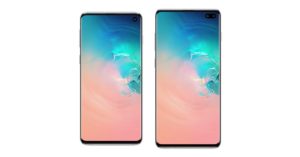 Samsung Galaxy S10 smartphone runs Android 9.0 Pie skinned with the company’s own One UI and features a 6.1-inch QHD+ Curved Dynamic AMOLED Infinity-O display. Powered by either the 7nm octa-core Qualcomm Snapdragon 855 SoC or the 8nm octa-core Samsung Exynos 9820 SoC processor, depending on the market, the smartphone comes with 8GB of RAM. On the camera front, Samsung Galaxy S10 comes with a triple rear camera setup that comprises of a 12MP wide-angle camera, a 12MP telephoto sensor, and a 16MP ultra-wide lens. For selfies and video calls, there is a 10MP sensor and the device houses a 3,400mAh battery. Samsung Galaxy S10+ features a 6.4-inch QHD+ Curved Dynamic AMOLED Infinity-O display and comes with 8GB as well as 12GB of RAM. While the rear cameras of Samsung Galaxy S10+ are the same as Galaxy S10’s, on the front, it has 10MP+8MP dual selfie cameras. Samsung Galaxy S10+ is available in 128GB, 512GB, and 1TB storage options and they all can hold a microSD card of up to 512GB. The device houses a 4,100mAh battery. Both Samsung Galaxy S10 and Galaxy S10+ sport an ultrasonic in-display fingerprint sensor. Samsung Galaxy S10e, on the other hand, comes with a 5.8-inch full-HD+ Flat Dynamic AMOLED Infinity-O display and is available with either 6GB or 8GB of RAM. For imaging duties, Samsung Galaxy S10e comes with a 12MP+ 16MP dual rear cameras. It is available in 128GB and 512GB storage variants and houses a 3,100mAh battery.
Samsung Galaxy S10 smartphone runs Android 9.0 Pie skinned with the company’s own One UI and features a 6.1-inch QHD+ Curved Dynamic AMOLED Infinity-O display. Powered by either the 7nm octa-core Qualcomm Snapdragon 855 SoC or the 8nm octa-core Samsung Exynos 9820 SoC processor, depending on the market, the smartphone comes with 8GB of RAM. On the camera front, Samsung Galaxy S10 comes with a triple rear camera setup that comprises of a 12MP wide-angle camera, a 12MP telephoto sensor, and a 16MP ultra-wide lens. For selfies and video calls, there is a 10MP sensor and the device houses a 3,400mAh battery. Samsung Galaxy S10+ features a 6.4-inch QHD+ Curved Dynamic AMOLED Infinity-O display and comes with 8GB as well as 12GB of RAM. While the rear cameras of Samsung Galaxy S10+ are the same as Galaxy S10’s, on the front, it has 10MP+8MP dual selfie cameras. Samsung Galaxy S10+ is available in 128GB, 512GB, and 1TB storage options and they all can hold a microSD card of up to 512GB. The device houses a 4,100mAh battery. Both Samsung Galaxy S10 and Galaxy S10+ sport an ultrasonic in-display fingerprint sensor. Samsung Galaxy S10e, on the other hand, comes with a 5.8-inch full-HD+ Flat Dynamic AMOLED Infinity-O display and is available with either 6GB or 8GB of RAM. For imaging duties, Samsung Galaxy S10e comes with a 12MP+ 16MP dual rear cameras. It is available in 128GB and 512GB storage variants and houses a 3,100mAh battery.
Samsung Galaxy S9 and Galaxy S9+
 Samsung Galaxy S9 and Galaxy S9+ were launched last year by Samsung and they came with Samsung Experience 9.0 UI on top of Android 8.0 Oreo at the time of their launch. However, they have received subsequent updates after that. The smartphones were powered by either Qualcomm Snapdragon 845 processor or Exynos 9810 SoC clubbed with 4GB (S9) or 6GB (S9+) RAM clubbed with 64GB, 128GB or 256GB of internal storage. The devices can also hold microSD cards of up to 512GB and come with support for Bixby. While Samsung Galaxy S9 features a 5.8-inch Super AMOLED capacitive touchscreen Infinity Display and houses a 3,000mAh battery, Galaxy S9+ has a 6.2-inch Super AMOLED capacitive touchscreen Infinity screen and packs a 3,500mAh battery. While the younger sibling comes with a 12MP primary camera, the bigger sibling has dual 12MP cameras. Both the smartphones have an 8MP selfie snapper.
Samsung Galaxy S9 and Galaxy S9+ were launched last year by Samsung and they came with Samsung Experience 9.0 UI on top of Android 8.0 Oreo at the time of their launch. However, they have received subsequent updates after that. The smartphones were powered by either Qualcomm Snapdragon 845 processor or Exynos 9810 SoC clubbed with 4GB (S9) or 6GB (S9+) RAM clubbed with 64GB, 128GB or 256GB of internal storage. The devices can also hold microSD cards of up to 512GB and come with support for Bixby. While Samsung Galaxy S9 features a 5.8-inch Super AMOLED capacitive touchscreen Infinity Display and houses a 3,000mAh battery, Galaxy S9+ has a 6.2-inch Super AMOLED capacitive touchscreen Infinity screen and packs a 3,500mAh battery. While the younger sibling comes with a 12MP primary camera, the bigger sibling has dual 12MP cameras. Both the smartphones have an 8MP selfie snapper.
Samsung Galaxy S8 and Galaxy S8+
 Samsung Galaxy S8 and Galaxy S8+ were launched in 2017 by the South Korean technology giant. The devices came with Android 7.0 Nougat with Samsung Experience 8.1 baked on top and were powered by Qualcomm Snapdragon 835 SoC or Exynos 8895 processor, depending on the market. The smartphones came with 4GB/6GB RAM clubbed with 64GB/128GB of internal storage and can hold a microSD card of up to 256GB. While Samsung Galaxy S8 features a 5.8-inch Super AMOLED capacitive touchscreen display and houses a 3,000mAh battery, Galaxy S8+ sports a 6.2-inch Super AMOLED capacitive touchscreen screen and packs a 3,500mAh battery. The smartphones come with a 12Mp primary camera at the back and an 8MP selfie camera.
Samsung Galaxy S8 and Galaxy S8+ were launched in 2017 by the South Korean technology giant. The devices came with Android 7.0 Nougat with Samsung Experience 8.1 baked on top and were powered by Qualcomm Snapdragon 835 SoC or Exynos 8895 processor, depending on the market. The smartphones came with 4GB/6GB RAM clubbed with 64GB/128GB of internal storage and can hold a microSD card of up to 256GB. While Samsung Galaxy S8 features a 5.8-inch Super AMOLED capacitive touchscreen display and houses a 3,000mAh battery, Galaxy S8+ sports a 6.2-inch Super AMOLED capacitive touchscreen screen and packs a 3,500mAh battery. The smartphones come with a 12Mp primary camera at the back and an 8MP selfie camera.
Samsung Galaxy S7, Samsung Galaxy S7 Edge and Samsung Galaxy S7 Active
 2016 saw the launch of Samsung Galaxy S7, Galaxy S7 Edge and Galaxy S7 Active smartphones. The handsets came with Android 7.0 Nougat skinned with Samsung Experience 8.0 at the time of their launch and were powered by Qualcomm Snapdragon 820 processor or Samsung Exynos 8890 SoC, depending on the region. All the three smartphones came with 4GB of RAM and 32/64/128GB of internal storage. Samsung Galaxy S7, Galaxy S7 Edge and Galaxy S7 Active could hold a microSD card of up to 256GB and housed 3,000mAh, 3,600mAh and 4,000mAh battery respectively. While Samsung Galaxy S7 and Galaxy S7 Active came with 5.1-inch Quad HD Super AMOLED display, Galaxy S7 Edge featured a 5.5-inch Quad HD Super AMOLED screen. The devices house a 12MP primary camera and a 5Mp selfie camera.
2016 saw the launch of Samsung Galaxy S7, Galaxy S7 Edge and Galaxy S7 Active smartphones. The handsets came with Android 7.0 Nougat skinned with Samsung Experience 8.0 at the time of their launch and were powered by Qualcomm Snapdragon 820 processor or Samsung Exynos 8890 SoC, depending on the region. All the three smartphones came with 4GB of RAM and 32/64/128GB of internal storage. Samsung Galaxy S7, Galaxy S7 Edge and Galaxy S7 Active could hold a microSD card of up to 256GB and housed 3,000mAh, 3,600mAh and 4,000mAh battery respectively. While Samsung Galaxy S7 and Galaxy S7 Active came with 5.1-inch Quad HD Super AMOLED display, Galaxy S7 Edge featured a 5.5-inch Quad HD Super AMOLED screen. The devices house a 12MP primary camera and a 5Mp selfie camera.
Samsung Galaxy S6, Galaxy S6 Edge and Galaxy S6 Edge+
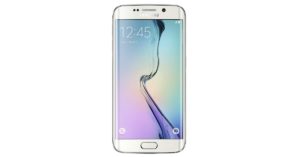 In 2015, Samsung launched its Galaxy S6, Galaxy S6 Edge, and Galaxy S6 Edge+ smartphones. All the three smartphones came with Android Lollipop and were powered by Samsung Exynos 7420 octa-score processor clubbed with Mali-T760 MP8 GPU. While Samsung Galaxy S6 and Galaxy S6 Edge came with 3GB RAM and 32GB/64GB/128GB of internal storage, the Galaxy S6 Edge+ had 4GB of RAM and 32GB/64GB of internal storage. The three devices also differed on battery sizes. While Samsung Galaxy S6 housed a 2,550mAh battery, Galaxy S6 Edge and Galaxy S6 Edge+ packed a 2,600mAh and a 3,000mAh battery respectively. Samsung Galaxy S6 and Galaxy S6 Edge featured a 5.1 inches Super AMOLED display, while Galaxy S6 Edge+ came with a 5.7 inches Super AMOLED screen.
In 2015, Samsung launched its Galaxy S6, Galaxy S6 Edge, and Galaxy S6 Edge+ smartphones. All the three smartphones came with Android Lollipop and were powered by Samsung Exynos 7420 octa-score processor clubbed with Mali-T760 MP8 GPU. While Samsung Galaxy S6 and Galaxy S6 Edge came with 3GB RAM and 32GB/64GB/128GB of internal storage, the Galaxy S6 Edge+ had 4GB of RAM and 32GB/64GB of internal storage. The three devices also differed on battery sizes. While Samsung Galaxy S6 housed a 2,550mAh battery, Galaxy S6 Edge and Galaxy S6 Edge+ packed a 2,600mAh and a 3,000mAh battery respectively. Samsung Galaxy S6 and Galaxy S6 Edge featured a 5.1 inches Super AMOLED display, while Galaxy S6 Edge+ came with a 5.7 inches Super AMOLED screen.
Samsung Galaxy S5
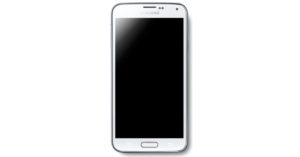
Samsung Galaxy S4

Samsung Galaxy S III

Samsung Galaxy S II
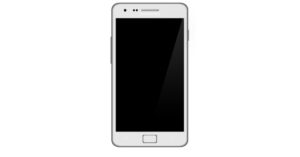
Samsung Galaxy S
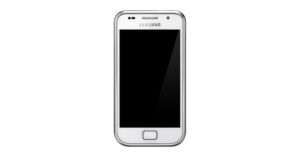
Realme 3 will sport a MediaTek Helio P70 SoC
Till now there is no launch date confirmed by the company or its CEO, but according to rumours we could see it launching in March of 2019. For the latest gadget and tech news, and gadget reviews, follow us on Twitter, Facebook and Instagram. For newest tech & gadget videos subscribe to our YouTube Channel.Attraction comes in many forms. Shining like diamonds or stars? pic.twitter.com/ZlellwBpaS
— Madhav Faster7 (@MadhavSheth1) February 20, 2019
Twitter to start public testing of redesigned replies
Nokia 6 and Nokia 8 start receiving Android 9.0 Pie updates
In This Article
Nokia 6 specifications
To recall, the Nokia 6 sports a 5.5-inch LCD capacitive touchscreen, a resolution of 1,080×1,920 and an aspect ratio of 16:9. It is powered by Qualcomm Snapdragon 430 SoC. There are two RAM variants—3GB and 4GB. They bring internal storage for 32GB and 64GB respectively. There is a single rear camera here, which comprises of a 16MP sensor. A front camera with an 8MP sensor is also there. Connectivity options include WiFi 802.11, Bluetooth 4.1, GPS, NFC, FM Radio and microUSB 2.0. The Nokia 6 is powered by a non-removable battery of 3,000mAh.Nokia 8 specifications
The Nokia 8 sports a 5.3-inch 1,440×2,560 display with an aspect ratio of 16:9. The device is powered by Qualcomm Snapdragon 835 processor. There is a 4GB RAM and a 6GB RAM variant which come with 64GB and 128GB internal storage respectively. The smartphone can additionally hold up to 512GB data via a microSD card. There is a dual rear camera setup of 13MP each and a front camera with a 13MP sensor, that is meant for selfies. Connectivity options include WiFi 802.11, Bluetooth 5.0, GPS, NFC and USB 3.1. The Nokia 8 houses a non-removable battery of 3,090mAh and comes in multiple colour options. This includes tempered blue, polished blue, steel and copper polish. Sensors of the handset include a fingerprint sensor, accelerometer, gyro sensor, proximity sensor, compass and barometer. For the latest gadget and tech news, and gadget reviews, follow us on Twitter, Facebook and Instagram. For newest tech & gadget videos subscribe to our YouTube Channel.Samsung Galaxy S10 vs Apple iPhone XS: Comparison
In This Article
Display:
Samsung Galaxy S10: 6.1-inch QHD+ Curved Dynamic AMOLED Infinity-O display Apple iPhone XS: 5.8-inch OLED Super Retina display https://www.youtube.com/watch?v=ZCfgkIyD9g0&t=139sProcessor:
Samsung Galaxy S10: Qualcomm Snapdragon 855 SoC or Samsung Exynos 9820 SoC. Apple iPhone XS: A12 Bionic chipsetPrimary Camera:
Samsung Galaxy S10: 12MP wide-angle camera paired with 2PD autofocus and f/1.5 to f/2.4 variable aperture + 12MP telephoto sensor with autofocus and f/2.4 aperture + 16MP ultra-wide lens with fixed focus and an f/2.2 aperture. Apple iPhone XS: 12MP wide-angle sensor with f/1.8 aperture + 12MP telephoto sensor with f/2.4 apertureFront Camera:
Samsung Galaxy S10: 10MP sensor with 2PD autofocus and f/1.9 aperture Apple iPhone XS: 7MP RGB selfie camera with f/2.2 apertureRAM and Storage:
Samsung Galaxy S10: 8GB RAM + 128GB or 512GB storage options Apple iPhone XS: 4GB RAM + 64GB, 256GB and 512GB storage variantsThe #GalaxyS10 is a next generation smartphone like no other.
— Samsung Mobile (@SamsungMobile) February 20, 2019
The next generation Galaxy has arrived.
Learn more: https://t.co/UstjA79jjF pic.twitter.com/IWbJ039quG
Support for Storage card:
Samsung Galaxy S10: Yes, up to 512GB Apple iPhone XS: NoBattery:
Samsung Galaxy S10: 3,400mAh Apple iPhone XS: 2,658mAhOperating System (OS):
Samsung Galaxy S10: Android 9 Pie skinned with Samsung One UI Apple iPhone XS: iOS 12Starting Price:
Samsung Galaxy S10: starting price $899.99 (approx Rs 64,000), Indian market price not announced yet Apple iPhone XS: starting price $999 (approx Rs 71,115), but Rs 94,900 for 64GB in Indian market.Lenovo Z6 Pro to be unveiled at MWC 2019
 To recall, Lenovo had engaged in guerrilla marketing techniques when it launched the Z5 Pro smartphone and had made tall claims about the device. When the smartphone did not meet the expectations of users at the launch, the company somewhere lost its credibility and its teasers were no longer taken seriously. Maybe that is the reason that the Chinese smartphone brand has adopted a different route to market its Lenovo Z5 Pro smartphone.
This is actually the first time that Cheng has spoken about the smartphone, which completely defies the way he normally posts teasers of smartphones months ahead of their launch.
For the latest gadget and tech news, and gadget reviews, follow us on Twitter, Facebook and Instagram. For newest tech & gadget videos subscribe to our YouTube Channel.
To recall, Lenovo had engaged in guerrilla marketing techniques when it launched the Z5 Pro smartphone and had made tall claims about the device. When the smartphone did not meet the expectations of users at the launch, the company somewhere lost its credibility and its teasers were no longer taken seriously. Maybe that is the reason that the Chinese smartphone brand has adopted a different route to market its Lenovo Z5 Pro smartphone.
This is actually the first time that Cheng has spoken about the smartphone, which completely defies the way he normally posts teasers of smartphones months ahead of their launch.
For the latest gadget and tech news, and gadget reviews, follow us on Twitter, Facebook and Instagram. For newest tech & gadget videos subscribe to our YouTube Channel. Samsung Galaxy Buds launched with wireless connectivity
While the charging case comes with a 252mAh battery backup with USB Type-C, so the Buds can be charged over 3-4 times. The company has also said that these earphones can deliver up to 1.7 hours of music playback after just 15 minutes of charge. The weight of the Samsung Galaxy Buds is 5.6 grams and the charging case weighs 39.6 grams. They measure 17.5×19.4×22.3mm while the charging case measures 38.8x70x26.5mm. There are sensors onboard the Galaxy Buds, which include accelerometer and proximity sensor. The Buds are also able to control the music or pick calls with its touch sensors and they also come with ear on/off detection. The Samsung Galaxy Buds can work with any Android device that has Android 5.0 or higher installed in it. The earbuds support SBC, AAC, Scalable (Samsung proprietary) codecs. For the latest gadget and tech news, and gadget reviews, follow us on Twitter, Facebook and Instagram. For newest tech & gadget videos subscribe to our YouTube Channel.Introducing the new #GalaxyBuds. #SamsungEvent
— Samsung Mobile (@SamsungMobile) February 20, 2019
Learn more: https://t.co/Tao3CBYQoh pic.twitter.com/ECy8nqnK14
Samsung Galaxy Watch Active, Galaxy Fit and Galaxy Fit e unveiled: Price and specifications
In This Article
Samsung Galaxy Watch Active, Galaxy Fit and Galaxy Fit e price and availability
Samsung Galaxy Watch Active smartwatch has been priced at $199.99 which becomes approximately Rs 14,300 when converted to Indian money. The smartwatch is available in Silver, Black, Rose Gold, Sea Green and will go on pre-orders in the United States on February 21. Its shipping will begin on March 8. https://www.youtube.com/watch?v=LRTqadjEkiQ Samsung Galaxy Fit, on the other hand, costs $99 and upon conversion, this becomes approximately Rs 7,000. The band will be available in Black and Silver colour go on sale on May 31 in the United States. Speaking of Samsung Galaxy Fit e, there is no word on the pricing and availability details of the fitness band as of now. It will be available in Black, White and Yellow colours. Currently, there is no word on the India pricing or availability of the smartwatch or fitness bands.Samsung Galaxy Watch Active, Galaxy Fit and Galaxy Fit e specifications
According to Samsung, its Galaxy Watch Active smartwatch is more than just a fitness tracking wearable. Samsung Galaxy Active Watch can be used for tracking exercises, sleep, stress, and health. Samsung claims that these features make it “a personal lifestyle coach for those seeking a healthier body and mind.” It is the first wearable by the company that can monitor blood pressure, and users will have to download the MY BP Lab app in order to do so. Samsung has developed this app by collaborating with the University of California, San Francisco. However, we should mention that this feature is only limited to a few markets including US, Canada, Singapore, Australia, and Germany. The watch has support for Bixby and can be connected to Android as well as iOS devices. Samsung Galaxy Watch Active comes with a 1.1-inch 360×360 pixel AMOLED display that is protected by Gorilla Glass 3 and houses a 230mAh battery. The wearable is powered by dual-core Exynos 9110 processor clubbed with 768MB of RAM and 4GB internal storage and runs Tizen-based Wearable OS 4.0. It has IP68 certified and has 5ATM water resistance.
Coming to Samsung Galaxy Fit and Galaxy Fit e, the newly-launched fitness bands come with intuitive fitness tracking and, according to the company, can automatically start tracking when the user runs, walks, rides a bike or begins working out. While Samsung Galaxy Fit sports a 0.95-inch 120×240 pixel AMOLED display, Galaxy Fit e comes with a 0.74-inch 64×128 pixel PMOLED screen. Both the devices run Realtime OS and come with a heart-rate monitor. Much like Samsung Galaxy Watch Active, they have 5ATM water resistance.
Speaking about the new wearables launched by Samsung, President and CEO of IT & Mobile Communications Division of Samsung Electronics – DJ Koh said, “Consumers are increasingly putting their overall wellbeing at the centre of their lifestyle decisions, and they’re looking for wearables that make it easier to get active and stay balanced every day. Everyone has their own way of pursuing their goals. We’re thrilled to introduce our new line of wearables to fit seamlessly into your life and complement your own personal wellness journey.”
The watch has support for Bixby and can be connected to Android as well as iOS devices. Samsung Galaxy Watch Active comes with a 1.1-inch 360×360 pixel AMOLED display that is protected by Gorilla Glass 3 and houses a 230mAh battery. The wearable is powered by dual-core Exynos 9110 processor clubbed with 768MB of RAM and 4GB internal storage and runs Tizen-based Wearable OS 4.0. It has IP68 certified and has 5ATM water resistance.
Coming to Samsung Galaxy Fit and Galaxy Fit e, the newly-launched fitness bands come with intuitive fitness tracking and, according to the company, can automatically start tracking when the user runs, walks, rides a bike or begins working out. While Samsung Galaxy Fit sports a 0.95-inch 120×240 pixel AMOLED display, Galaxy Fit e comes with a 0.74-inch 64×128 pixel PMOLED screen. Both the devices run Realtime OS and come with a heart-rate monitor. Much like Samsung Galaxy Watch Active, they have 5ATM water resistance.
Speaking about the new wearables launched by Samsung, President and CEO of IT & Mobile Communications Division of Samsung Electronics – DJ Koh said, “Consumers are increasingly putting their overall wellbeing at the centre of their lifestyle decisions, and they’re looking for wearables that make it easier to get active and stay balanced every day. Everyone has their own way of pursuing their goals. We’re thrilled to introduce our new line of wearables to fit seamlessly into your life and complement your own personal wellness journey.”
Samsung Galaxy S10e vs iPhone XR: Comparison
In This Article
Display
Samsung Galaxy S10e: 5.8-inch Dynamic AMOLED capacitive touchscreen with a resolution of 1,080×2,280 pixels and 19:9 aspect ratio iPhone XR: 6.1-inch IPS LCD capacitive touchscreen with a resolution of 828×1,792 pixels and an aspect ratio of 19.5:9Processor
Samsung Galaxy S10e: Qualcomm Snapdragon 855 SoC iPhone XR: Apple A12 BionicRear Camera
Samsung Galaxy S10e: 12MP and 16MP dual rear camera setup iPhone XR: 12MP single rear cameraFront Camera
Samsung Galaxy: 10MP selfie camera iPhone XR: 7MP front camera meant for clicking selfiesRAM and Storage
Samsung Galaxy S10e: 6GB RAM coupled with 128GB internal storage, 8GB RAM coupled with 256GB internal storage iPhone XR: 3GB RAM coupled with 64GB, 128GB and 256GB storage variantsSupport for Storage card
Samsung Galaxy S10e: microSD card slot with storage up to 512GB iPhone XR: No microSD card slotBattery
Samsung Galaxy S10e: 3,100mAh non-removable battery iPhone XR: 2,942mAh non-removable batteryOperating System (OS)
Samsung Galaxy S10e: Android 9.0 Pie out-of-the-box skinned with UI 1 iPhone XR: iOS 12.1.3Starting Price
Samsung Galaxy S10e: Rs 53,300 approx iPhone XR: Rs 76,900 For the latest gadget and tech news, and gadget reviews, follow us on Twitter, Facebook and Instagram. For newest tech & gadget videos subscribe to our YouTube Channel.[Infographic] Samsung Galaxy S10+ vs Samsung Galaxy S9+: Comparison




 For the latest gadget and tech news, and gadget reviews, follow us on Twitter, Facebook and Instagram. For newest tech & gadget videos subscribe to our YouTube Channel.
For the latest gadget and tech news, and gadget reviews, follow us on Twitter, Facebook and Instagram. For newest tech & gadget videos subscribe to our YouTube Channel.
Volkswagen Connect App: A must have if you own a Volkswagen car
In This Article
User Interface
Let’s start with the UI. The App is available on both iOS and Android. We used the Android version, which does not take too much space in the smartphone and has a very clean interface. Everything is placed nicely, including tabs and setting it up does not take much time. There is a tutorial available in the App too that takes you through the Apps features, if you are using it for the first time. We do recommend you run through it once so that you are familiar with the settings and features. The UI is built of just three colours, Blue, Black and white, which keeps everything simple. Users will find things like Tank fuel level, battery voltage, mileage and much more on the app. You just need to connect the app to the VW cars console (or in some cases a wireless data plug) and you would be able to see all of this and more.Ease of Use and features
We found the app to be quite convenient. It does not take a lot of the smartphones memory and one would not feel lost in it. Everything is pretty much self-explanatory and one can navigate through it with ease. Features like Trips enable the user to record all the journeys one has been on and there is statistics available here too. This even sorts it via day or night trips, so when turned on, every trip that you take in your Volkswagen car gets recorded for you to analyse. With the app, users can also find the nearest VW service station and book appointments, as it has a map within too. You can also rate them as your favourite so the app knows which one to take you to next time you need your car to be serviced. Roadside assistance is a good addition, though we did not use it, nevertheless is something you can use easily in the city at the time of need. VW wants you to drive safe and make your journey safer, which is why they added a section in the app called my challenges. Here the driver gets points by driving well. You can activate three challenges only at a time. These are fun challenges that make your drive a pleasurable one. Things like long distance driver, 100/200/300 KM drive challenge et al are available on it. Completing each gets you points on the app. Parking space is another good feature in the app, that remembers where you parked your car. You can also share your parking position with other people. So that in case they want to pick up your car for you they would know exactly where to look. This worked well in open car parking spaces, however in the basement level 2 or 3 it was not super accurate.Final words
All in all, the Volkswagen Connect app is a good software to have if you own a VW car. It will keep track of your car services and can keep your auto data within too. Challenges are a fun addition and best of all it is free to download. For the latest gadget and tech news, and gadget reviews, follow us on Twitter, Facebook and Instagram. For newest tech & gadget videos subscribe to our YouTube Channel.WhatsApp admits that it has Face ID and Touch ID bugs: Activates Change authentication timer
Samsung Galaxy S10+ vs Apple iPhone XS Max: Comparison
In This Article
Display:
Samsung Galaxy S10+: 6.4-inch QHD+ Curved Dynamic AMOLED Infinity-O display Apple iPhone XS Max: 6.5-inch OLED HDR Super Retina displayProcessor:
Samsung Galaxy S10+: Qualcomm Snapdragon 855 SoC or Exynos 9820 SoC Apple iPhone XS Max: A12 Bionic processorPrimary Camera:
Samsung Galaxy S10+: 12MP wide-angle camera paired with 2PD autofocus and f/1.5 to f/2.4 variable aperture + a 12MP telephoto sensor with autofocus and f/2.4 aperture +a 16MP ultra-wide lens with fixed focus and an f/2.2 aperture Apple iPhone XS Max: 12MP wide-angle lens + 12MP telephoto lensFront Camera:
Samsung Galaxy S10+: 10MP sensor that comes with 2PD autofocus + an f/1.9 aperture8MP fixed focus RGB depth sensor with an f/2.2 aperture Apple iPhone XS Max: 7MP TrueDepth cameraRAM and Storage:
Samsung Galaxy S10+: 8GB and 12GB RAM + 128GB or 512GB or 1TB storage options Apple iPhone XS Max: 4GB RAM + 256GB, and 512GB storage options.Support for Storage card:
Samsung Galaxy S10+: Yes, up to 512GB Apple iPhone XS Max: No microSD card slotThe #GalaxyS10 is a next generation smartphone like no other.
— Samsung Mobile (@SamsungMobile) February 20, 2019
The next generation Galaxy has arrived.
Learn more: https://t.co/UstjA79jjF pic.twitter.com/IWbJ039quG
Battery:
Samsung Galaxy S10+: 4,100mAh battery Apple iPhone XS Max: 3,174 mAhOperating System (OS):
Samsung Galaxy S10+: Android 9.0 Pie skinned with Samsung’s One UI Apple iPhone XS Max: iOS 12Starting Price:
Samsung Galaxy S10+: Starts at $999.99, which is approx. Rs 70,999 Apple iPhone XS Max: The 64GB storage variant costs Rs 1,09,900, 256GB variant is available at Rs 1,24,900 and 512GB variant is priced at Rs 1,44,900.Samsung Galaxy Fold with 7.3-inch Infinity Flex display unveiled: Price and specifications
In This Article
Samsung Galaxy Fold price and availability
Samsung has announced that its Galaxy Fold smartphone will go on sale starting April 26 in select countries. Samsung Galaxy Fold is priced at $1,980 which, on conversion becomes Rs 1,41,300. The device will be available in Green, Blue, Silver and Black colour variants and can be bought with 4G LTE as well as 5G connectivity.Samsung Galaxy Fold specifications
Speaking about the specifications of the Samsung Galaxy Fold smartphone, it is powered by a 7nm unnamed processor, which is speculated to be Snapdragon 855 SoC. As we mentioned earlier, the device comes with two displays. When the device is unfolded into a tablet, it can be seen with a 7.3-inch Infinity Flex Dynamic AMOLED panel with 1536×2152 pixels and an aspect ratio of 4.2:3. And when it is folded into a candy bar phone, its 4.6-inch Super AMOLED panel with 840×1960 pixels resolution and 21:9 aspect ratio can be seen. Samsung Galaxy Fold comes with 12GB of RAM and 512GB of internal storage, however, it does not have any support a microSD card. The batteries of the smartphone have a combined capacity of 4,380mAh. Samsung Galaxy Fold comes with six cameras, among which three are placed on its back panel, two can be accessed when the device is unfolded, and the last one is placed on the front which can only be seen when it is folded into a candy bar phone. Speaking of the triple rear camera setup, it comes with a 16MP ultra-wide sensor with an f/2.2 aperture, a 12MP wide-angle sensor that comes with dual pixel AF and has a variable aperture of f/1.5 to f/2.4, and a third 12MP telephoto lens with PDAF and an f/2.4 aperture clubbed with 2X optical zoom. The cameras also come with Optical Image Stabilization. Coming to the dual front cameras that are visible when the device is in the tablet mode, there is one 10MP sensor with an f/2.2 aperture and an 8MP RBG depth sensor with an f/1.9 aperture. The selfie camera that can only be seen when the device is working as a candy bar phone has a 10MP sensor with an f/2.2 aperture.
Samsung Galaxy Fold smartphone runs Android Pie skinned with Samsung’s OneUI software. The device can run three apps simultaneously when it is unfolded and being used in its 7.3-inch mode. Another key feature that is available on the device is App Continuity, that allows a seamless transition from larger to the smaller screen and vice versa so that you can use apps in any mode without having to start over again when switching modes. Samsung claims that apps like YouTube, WhatsApp, and Microsoft Office have been optimized especially so that they run smoothly on the Samsung Galaxy Fold smartphone.
Coming to the dual front cameras that are visible when the device is in the tablet mode, there is one 10MP sensor with an f/2.2 aperture and an 8MP RBG depth sensor with an f/1.9 aperture. The selfie camera that can only be seen when the device is working as a candy bar phone has a 10MP sensor with an f/2.2 aperture.
Samsung Galaxy Fold smartphone runs Android Pie skinned with Samsung’s OneUI software. The device can run three apps simultaneously when it is unfolded and being used in its 7.3-inch mode. Another key feature that is available on the device is App Continuity, that allows a seamless transition from larger to the smaller screen and vice versa so that you can use apps in any mode without having to start over again when switching modes. Samsung claims that apps like YouTube, WhatsApp, and Microsoft Office have been optimized especially so that they run smoothly on the Samsung Galaxy Fold smartphone.
Google likely to showcase it’s game console at Game Developer conference
The Legendary Gaming Mouse returns, Logitech MX518 gets an upgrade and will start shipping soon
The original Logitech MX 518 is still selling in the markets despite it being more than 12 years old, it is currently available in the market for Rs 3,799. However, the upgraded Logitech G MX518 is available for pre-order only for a price of $60 (approx. Rs 4,270). It is priced higher than the original MX518 which was priced $49 (approx. Rs 3,500) but it also comes with better and present technology onboard so the price might be justified.✅ HERO 16K gaming sensor
— Logitech G (@LogitechG) February 19, 2019
✅ 32-bit ARM Processor
✅ Onboard Memory
✅ 1 ms report rate
✅ 8 Programmable Buttons#PlayAdvanced with the MX518. https://t.co/bjMXkXfnIG pic.twitter.com/eUTsqtmi0a
Samsung Galaxy S10, Galaxy S10+, Galaxy S10e with Infinity-O displays, ultrasonic in-display fingerprint sensors launched: Price and specifications
In This Article
Samsung Galaxy S10, Galaxy S10+ and Galaxy S10e price
The price of Samsung Galaxy S10 starts at $899.99, and the smartphone will be available in Prism Black, Prism Blue, Prism Green, and Prism White colours. On the other hand, Samsung Galaxy S10+’s price starts at $999.99 and the device can be bought in Prism Black, Prism Blue, Prism Green, Prism White, Ceramic Black and Ceramic White colour variants. https://www.youtube.com/watch?v=ZCfgkIyD9g0 Samsung Galaxy S10e is the most affordable of the lot and its price begins at $749.99 and the smartphone will be Prism Black, Prism Blue, Prism Green, Prism White and Canary Yellow colour variants. All three smartphones will go on sale on March 8 in the United States. As of now, Samsung has not disclosed the pricing of its Galaxy S10 5G variant, but it has confirmed that the device will be available via Verizon in the US.Samsung Galaxy S10 specifications
Samsung Galaxy S10 smartphone runs Android 9.0 Pie skinned with the company’s own One UI and features a 6.1-inch QHD+ Curved Dynamic AMOLED Infinity-O display that has an aspect ratio of 19:9 and a pixel density of 550ppi. Powered by either the 7nm octa-core Qualcomm Snapdragon 855 SoC or the 8nm octa-core Samsung Exynos 9820 SoC processor, depending on the market, the smartphone comes with 8GB of RAM. On the camera front, Samsung Galaxy S10 comes with a triple rear camera setup that comprises of a 12MP wide-angle camera paired with 2PD autofocus and f/1.5 to f/2.4 variable aperture, a 12MP telephoto sensor with autofocus and f/2.4 aperture, and a 16MP ultra-wide lens with fixed focus and an f/2.2 aperture. The cameras also come with optical image stabilization and 10x digital zoom. For selfies and video calls, there is a 10MP sensor that comes with 2PD autofocus and an f/1.9 aperture on the smartphone’s front panel. Samsung Galaxy S10 houses a 3,400mAh battery and comes with an ultrasonic in-display fingerprint sensor.Samsung Galaxy S10+ specifications
Samsung Galaxy S10+ has several things in common with the younger sibling. The smartphone features a 6.4-inch QHD+ Curved Dynamic AMOLED Infinity-O display, has the same aspect ratio as Galaxy S10’s but comes with a lower pixel density of 438ppi. It is powered by the same processor but comes with 8GB as well as 12GB of RAM. While the rear cameras of Samsung Galaxy S10+ are the same as Galaxy S10’s, on the front, it has dual selfie cameras. While the primary selfie camera is also the same as the younger sibling, the secondary selfie camera has an 8MP fixed focus RGB depth sensor with an f/2.2 aperture. The device is available in 128GB, 512GB, and 1TB storage options and they all can hold a microSD card of up to 512GB. Samsung Galaxy S10+ houses a 4,100mAh battery and sports an ultrasonic in-display fingerprint sensor.
While the primary selfie camera is also the same as the younger sibling, the secondary selfie camera has an 8MP fixed focus RGB depth sensor with an f/2.2 aperture. The device is available in 128GB, 512GB, and 1TB storage options and they all can hold a microSD card of up to 512GB. Samsung Galaxy S10+ houses a 4,100mAh battery and sports an ultrasonic in-display fingerprint sensor.


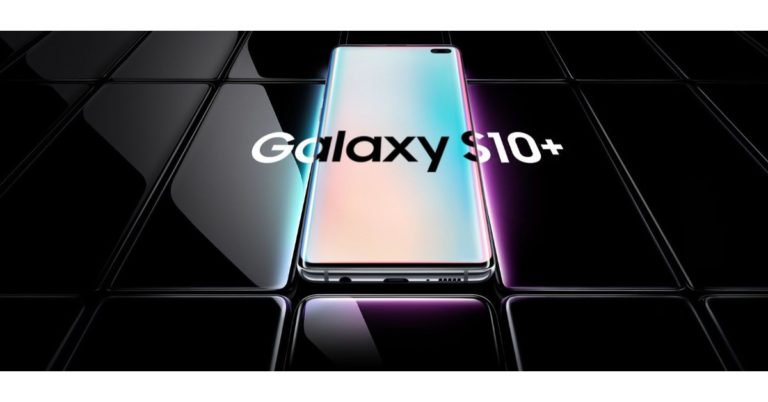

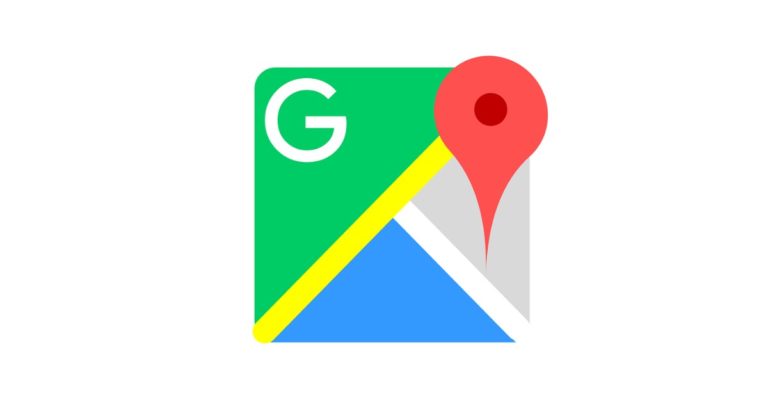

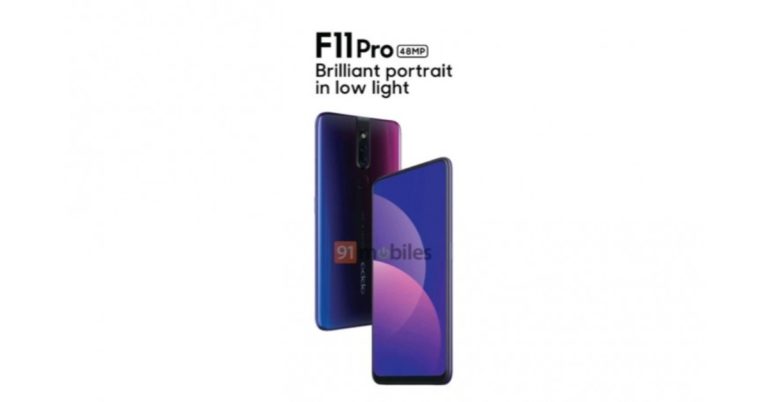


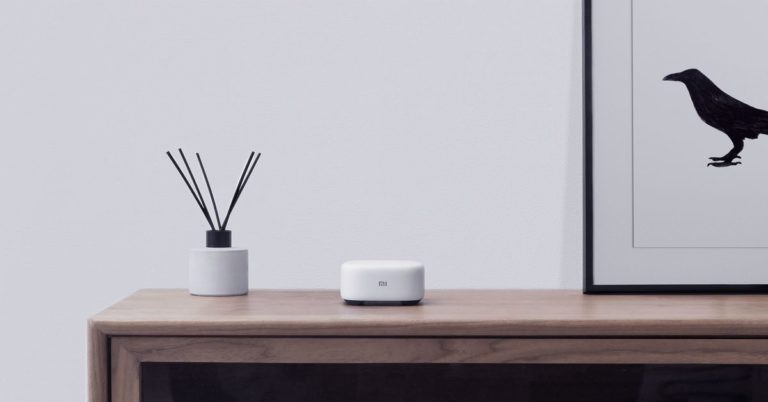



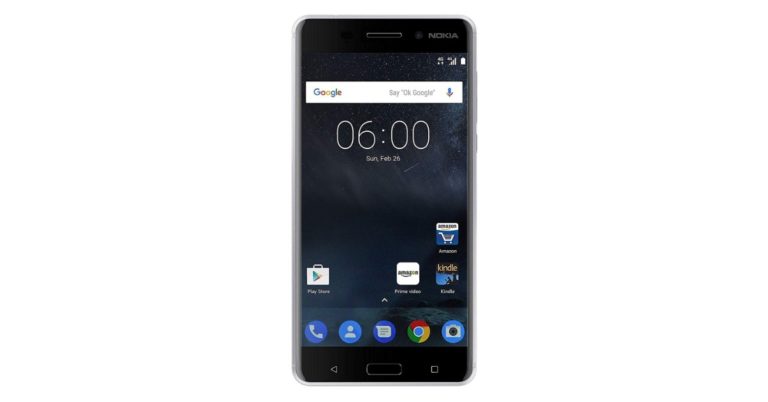
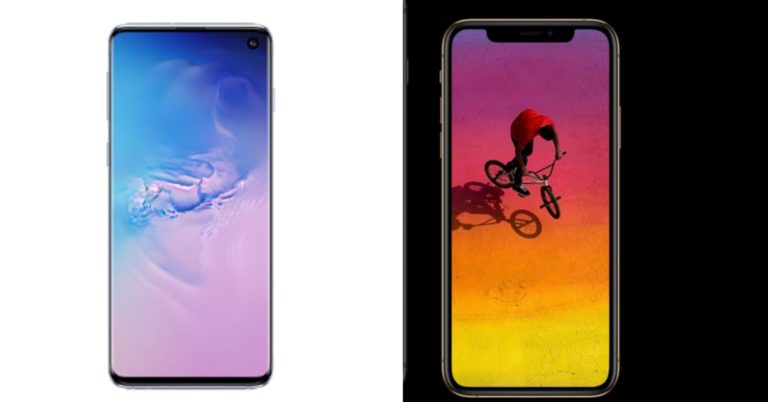




![[Infographic] Samsung Galaxy S10+ vs Samsung Galaxy S9+: Comparison [Infographic] Samsung Galaxy S10+ vs Samsung Galaxy S9+: Comparison](https://www.gadgetbridge.com/wp-content/uploads/2019/02/Samsung-Galaxy-S10-vs-Samsung-Galaxy-S9-768x402.jpeg)


